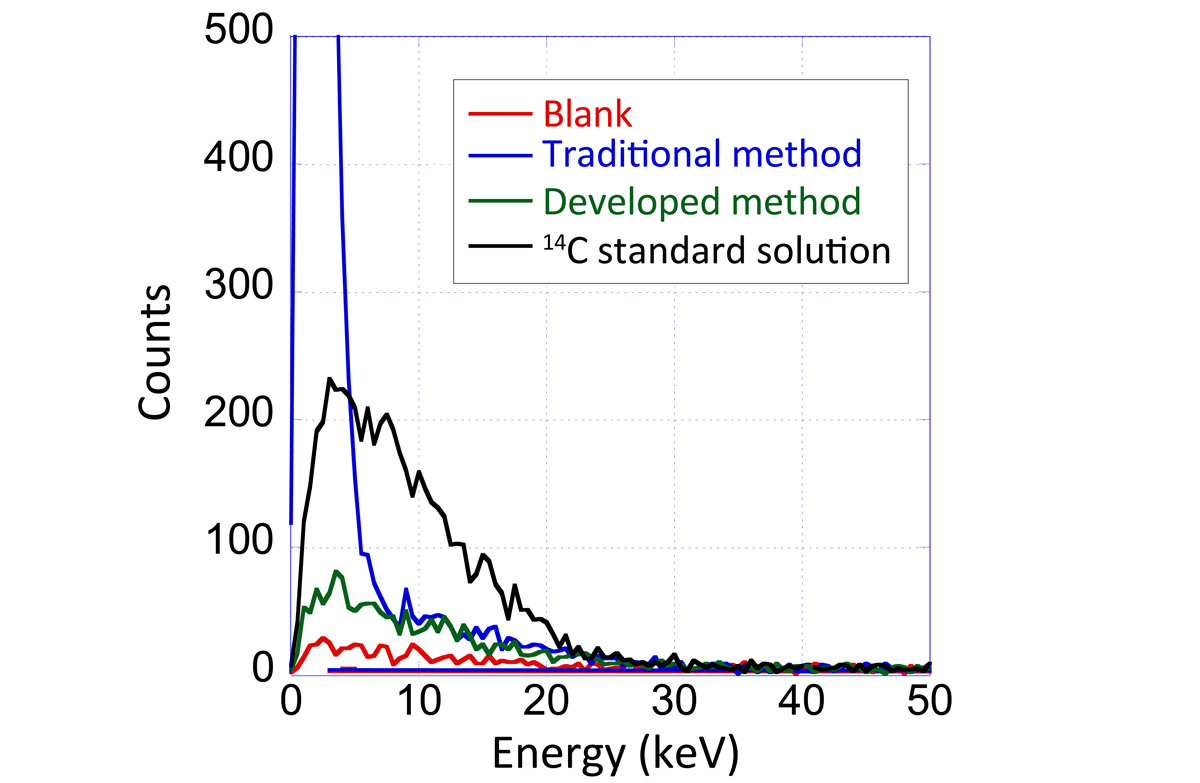Publication Date: November 4, 2025
Access counts:0
Independent Safety Analysis of ALPS-Treated Water
-Independent Monitoring by the Regulatory Authority-

Fig. 1 Liquid scintillation spectrum for 14C separated from ALPS-treated water
The ocean release of ALPS-treated water from the Fukushima Daiichi Nuclear Power Station has attracted significant attention internationally as well as domestically regarding its safety. The Nuclear Regulation Authority (NRA) must conduct independent monitoring to ensure the objectivity and transparency of nuclide concentration analyses. The Nuclear Safety Research Center, a technical support organization for the NRA, analyzed the radioactive nuclides (13 nuclides) contained in the ALPS-treated water that was collected in March 2022 prior to the start of the water discharge. As a result, it was confirmed that the concentrations of the analyzed nuclides, excluding 3H, were lower than the safety criteria. In addition, analytical values reported by Tokyo Electric Power Company were validated using statistical methods. Independent monitoring has continued once a year.
The Fig. 1 shows liquid scintillation spectrum for 14C separated from ALPS-treated water. Because the separation of 3H and 129I were insufficient, traps for them were added to the traditional method to analyze 14C contained in solid radioactive waste*. As a result, 14C was selectively separated, yielding a high-quality analytical result.
* Kameo, Y. et al., Simple and Rapid Determination Methods for Low-Level Radioactive Wastes Generated from Nuclear Research Facilities (Guidelines for Determination of Radioactive Waste Samples), JAEA-Technology 2009-051, 2009, 81p. (in Japanese).
If you have any comments or feedback about this page, please click the button to share your thoughts with us.
